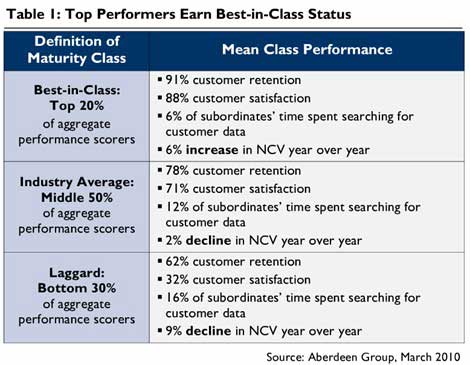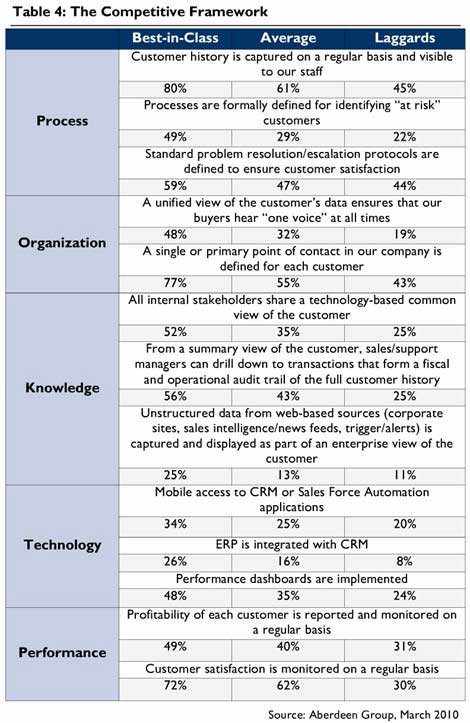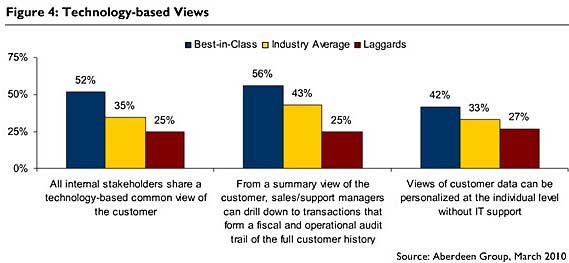Companies that have access to a holistic view of customer data achieve better customer service and efficiency, improved loyalty, and more repeat business from their established customers, according to a study by Aberdeen Group and VeraCentra.
Even in a tough economy, high-performing, "Best-in-Class" companies achieved a 91% customer retention rate and increased their net client value (NCV) 6%, while "Industry Average" and "Laggard" companies registered declines in NCV of 2% and 9%, respectively, the study found.

Best-in-Class companies also achieved significantly higher customer satisfaction levels than Laggard companies (88% vs. 32%) while spending less than half the time searching for customer data, according to the study titled Providing a 360° View of the Customer: Better Service—Higher Sales.
Below, other findings from the study.
Customer service and sales are the two dominant factors that drive the need for better customer data: 42% of companies cite improving the customer experience and 32% cite the demand for higher levels of services by customers—better, more efficient delivery of products and services.
Common Characteristics of Best-in-Class Companies
Among five key structural categories—process, organization, knowledge, technology, and performance—Best-in-Class companies share some common characteristics:
- 80% capture customer history and make it visible to all customer-facing staff.
- 77% have a single or primary point of contact in their company for each customer.
- 52% have a technology-based common view of the customer.
- 72% monitor customer satisfaction on a regular basis.

Looking for great digital marketing data? MarketingProfs reviewed more than 200 research sources and selected 64 of the best to create the Digital Marketing Factbook a 144-page compilation of data and 110 charts, covering email marketing, search engine marketing, and social media. Also check out The State of Social Media Marketing, a 240-page original research report from MarketingProfs.
Technology-Based View
Best-in-Class companies are more than twice as adept as Laggards at using technology to ensure all levels of the company share a technology-based common view of the customer. Even so, there is room for improvement: 48% of top performers have yet to achieve such a common view.

Top Two Strategic Actions
Improving access to customer data and two-way communication are the top 2 strategic actions now being taken by companies to achieve a more holistic view of the customer.
Best-in-Class companies differentiate themselves by concentrating on a dialogue with the customer: 43% are focused on creating new means of communication with customers, compared with 38% of Industry Average companies and 32% of Laggards.
Meanwhile, 48% of Laggards and 43% Industry Average companies still struggle to integrate multiple sources of data into a single view.
Other findings:
- 58% of companies say they are not reaching the full potential of business from current customers, while 26% report having strong penetration and just 4% say they have achieved the full potential of net client value.
- Best-in-Class companies are 123% more likely to formalize procedures for identifying "at risk" customers.
- Small companies (those with revenues below $50 million) have less difficulty aligning activities of all customer-facing departments with overall business goals. As companies grow, integrated communication and collaboration becomes more challenging.
About the data: Findings are from an Aberdeen Group online survey of 428 US companies from January to February, 2010. Survey data were supplemented with interviews among selected respondents. The study was cosponsored by VeraCentra.



